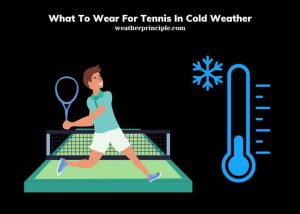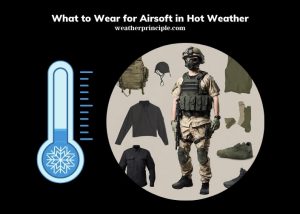Published on: May 8, 2023
Written by Shaown Khan / Fact-checked by Kader Khan
Weather plays a crucial role in the world of sports and recreation, influencing everything from the performance of athletes to the design of stadiums. From scorching heat to freezing cold, powerful winds to torrential downpours, athletes and enthusiasts alike must navigate a wide range of weather conditions to participate in their favorite activities.
In this article, we’ll explore the science behind weather’s impact on sports, examine weather-specific sports, discuss the role of weather in sports infrastructure, and delve into the importance of weather forecasting for sporting events.
Weather and Sports
The Impact of Temperature
Temperature can have a significant impact on athletic performance. Extreme heat can lead to dehydration, heat exhaustion, or even heat stroke, while cold temperatures can increase the risk of hypothermia and frostbite. Athletes must acclimate to these conditions and take precautions to protect their health. The optimal temperature for peak performance varies depending on the sport, with endurance events benefiting from cooler conditions, while sports that rely on explosive power may benefit from slightly warmer temperatures.
Wind and Air Pressure
Wind and air pressure can greatly influence the outcome of many sports. In outdoor events, wind can alter ball trajectories, requiring athletes to adjust their strategies accordingly. Air pressure also affects endurance sports, with high altitudes leading to decreased oxygen availability and increased difficulty in breathing. Athletes competing in windy conditions or at high altitudes must develop specialized strategies and techniques to overcome these challenges.
Humidity and Precipitation
High humidity can make it harder for athletes to regulate their body temperature, increasing the risk of overheating and impairing performance. Wet conditions, such as rain, can make surfaces slippery, increasing the risk of injury and requiring adjustments to gameplay. Water sports are also heavily influenced by water temperature, which can affect both performance and safety. Athletes must adapt to these conditions and take necessary precautions to avoid injury and illness.
Weather-Specific Sports
Winter Sports
Winter sports, such as skiing, snowboarding, and ice hockey, rely heavily on specific weather conditions. The quality of snow and ice can greatly affect performance and safety, making proper maintenance and grooming of competition surfaces essential. Climate change has raised concerns about the future of winter sports, with rising temperatures and decreasing snowfall potentially threatening their viability.
Water Sports
Weather conditions, such as tides, currents, and wind, play a significant role in water sports like sailing, surfing, and rowing. Athletes must develop a deep understanding of these factors to excel in their chosen sport. Adapting to changing weather conditions is a crucial skill for success in water sports, as conditions can change rapidly and dramatically.

Extreme Weather Sports
The growing popularity of extreme weather sports, such as storm chasing or ice climbing, reflects the allure of pushing human limits in the face of challenging conditions. These sports come with inherent risks, making proper preparation and safety measures critical. Participants must be well-trained, equipped, and knowledgeable about the potential dangers they may face.
Weather and Sports Infrastructure
Stadiums and Arenas
The design of stadiums and arenas must account for a variety of weather conditions to ensure the safety and comfort of athletes and spectators alike. Innovations such as retractable roofs and advanced climate control systems help to mitigate the impact of weather on sporting events. The spectator experience can also be significantly affected by weather, with poor conditions potentially leading to decreased attendance and revenue.

Outdoor Recreation Facilities
Outdoor sports facilities, such as parks, golf courses, and tennis courts, must be constructed using weather-resistant materials to withstand a range of conditions. Proper maintenance is essential to ensure these surfaces remain safe and playable. As climate change continues to alter weather patterns, facility managers must adapt their strategies to maintain the quality and functionality of these spaces.
Weather Forecasting and Sports
Accurate weather forecasting is vital for the organization and scheduling of sporting events. Advanced technology and improvements in weather prediction enable event planners to make informed decisions about when to hold competitions and what precautions to take. Sports organizations rely on this data to ensure the safety of athletes and spectators, minimize disruptions, and optimize conditions for peak performance.
Conclusion
The complex relationship between weather and sports cannot be understated. Athletes, coaches, and sports enthusiasts must develop an understanding of how weather impacts performance, safety, and infrastructure. With the ongoing challenges posed by climate change, it is more important than ever for the sports world to adapt and evolve. By preparing for and embracing weather challenges, we can continue to enjoy the thrill of competition and the camaraderie of recreational activities in a changing climate.
Frequently Asked Questions
How does weather affect the scheduling of sports events?
Weather can influence the timing and location of events, with organizers seeking to minimize disruptions and ensure the safety of athletes and spectators. Accurate weather forecasting plays a crucial role in these decisions.
What are the most weather-dependent sports?
Winter sports, such as skiing and snowboarding, and water sports like sailing and surfing, are heavily dependent on specific weather conditions. Extreme weather sports, which intentionally embrace challenging conditions, also rely heavily on the weather.
How do athletes prepare for competing in extreme weather conditions?
Athletes must acclimate to extreme conditions through training and practice, develop specialized techniques and strategies, and take necessary precautions to protect their health and safety.
What measures do sports organizations take to ensure safety during adverse weather?
Sports organizations rely on accurate weather forecasts to make informed decisions about event scheduling and safety precautions. They may also invest in infrastructure and technology designed to minimize the impact of weather on athletes, spectators, and facilities.



